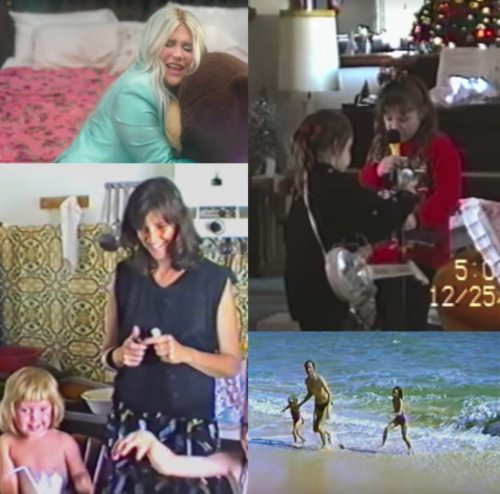Released in time for Mother’s Day, Lykke Li’s vastly divergent from the iPhone-centric video for “Deep End,” “Utopia,” finds her reminiscing about her recently deceased mother, fellow Swedish singer Kärsti Stiege, who died in 2017, a year after Li gave birth to her own son, Dion, with producer Jeff Bhasker. The concept behind one of her singles from So Sad So Sexy, thus, is rooted in the nostalgia that can only be crafted from the use of home videos.
Just as Kesha did with the concept for the visuals of “Learn to Let Go,” so, too, does Li give us a portrait of her innocence during childhood, peppered with the presence of her mother and father–walking along the beach with the former or through tree-lined streets with the latter. The narrative then transitions to her own present state as a mother, with clips of her holding Dion or running through open spaces with him–basking in the simple joy of interacting with him in a way that doesn’t involve, say, a screen (as it does for most parents desperately seeking a robotic babysitter). The video then starts to crosscut more frequently from Li’s childhood to Dion’s–the parallels between the two being that they are both immensely loved. As Li commented of “Utopia” on its May 12th release, “MOTHER TO MOTHER TO MOTHER. Utopia is all my mother ever wanted for me and all I ever want for him. HAPPY MOTHERS DAY! Miss u mamma.”
This ability that daughters have to fill the void of losing their mother is manifest most succinctly by Li’s understanding that the best way to honor her is by being the most loving mother she can in her own right (what most mothers don’t realize is that this is relatively easy: all you have to do is listen and not judge). Of course, when you aren’t a mother, you can instead take the Kesha route for home video employment–her purpose for “Learn to Let Go” being to showcase the destruction of her purity–that carefreeness that can only come with being a child–and her intention to reclaim it as best as she can by learning to relinquish the demons that have thus far made her irrevocably jaded (here’s looking at you, Dr. Luke).
Both songstresses, however, are all about the intermixing of their present selves with the past–for who are we in the present if not an amalgamation of the events that have happened to us in the past? At one point walking the streets alone in a manner that suggests both reflection and sadness, it appears that Li has made peace with something within herself–maybe the loss of her mother, maybe the acceptance of the weight of being a mother herself.
That she chooses to end the video on the note of her youthful self speaks to the fact that perhaps, deep down, we are always, at our core, just trying to re-create some semblance of a time when life felt pure–unmarred by the oftentimes iniquitous conditions of post-childhood existence. Which is also why Kesha concludes her own home video-driven song with the image of herself watching the young Kesha before closing in on a shot of a jacket she also had as a girl. Because no woman can ever truly lose that impish sense of wonder and excitement if she doesn’t allow it. That goes even for mothers such as Lykke Li.





















